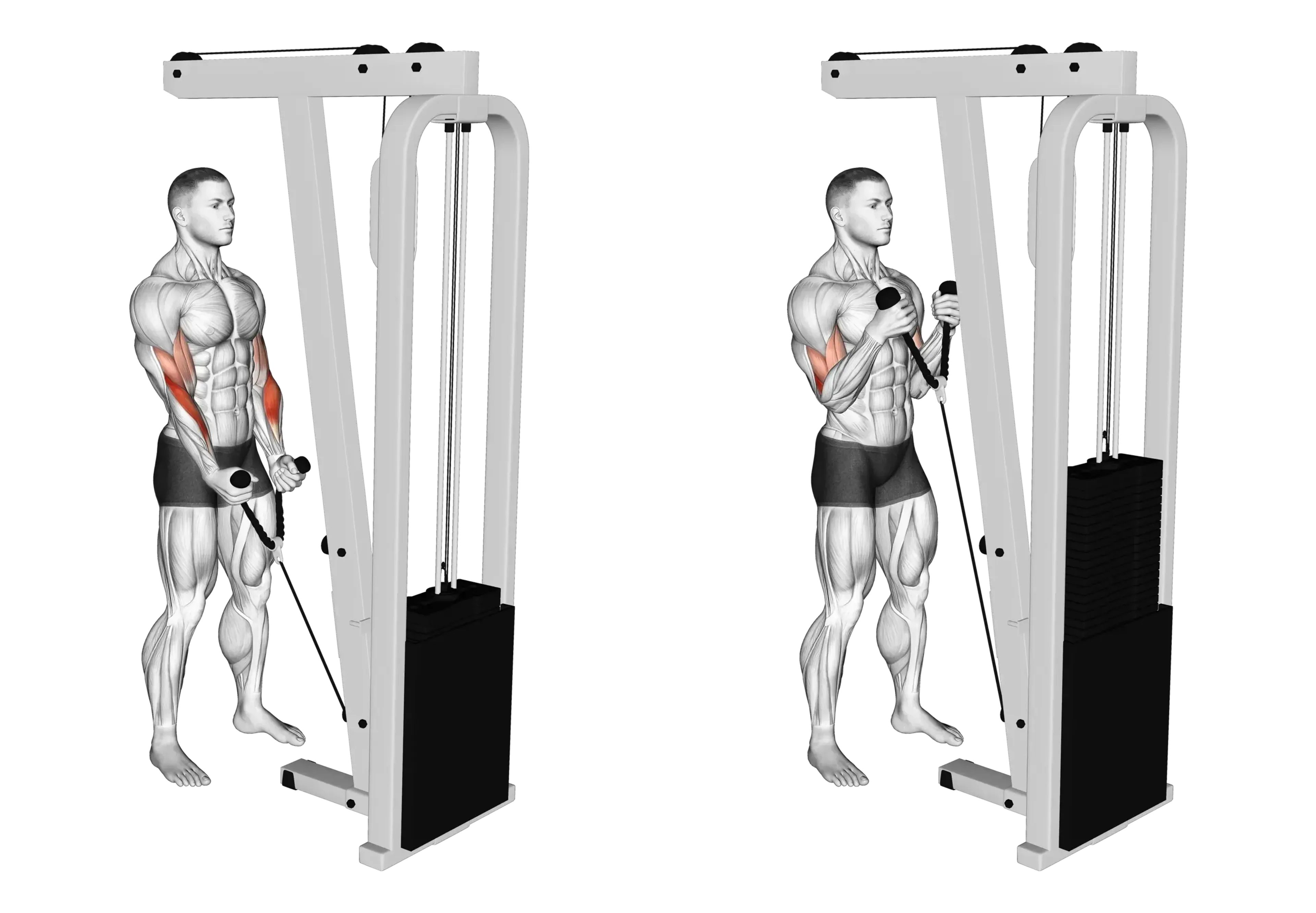Cable Rope Hammer Curl

Overview
- Primary Focus:
- Biceps.
- Equipment:
- Cable.
- Difficulty:
- Beginner.
General Information
The Cable Rope Hammer Curl is an isolation exercise that primarily targets the brachialis and brachioradialis, with secondary emphasis on the biceps brachii. This beginner-friendly movement uses a neutral grip and the cable machine to provide constant tension throughout the curl.
Unlike dumbbell hammer curls, using a rope attachment allows for a slightly longer range of motion and greater control at the top of the movement. The neutral grip (palms facing each other) emphasizes the brachialis, helping to build overall arm thickness.
Cable Rope Hammer Curls are a great accessory exercise to include in biceps or arm-focused training sessions. The controlled motion and steady resistance make them ideal for building size and reducing momentum-based cheating.
Muscles Worked
- Brachioradialis
- Primary
- Brachialis
- High
- Biceps Brachii
- Medium
- Flexor Carpi Radialis
- Low
Instructions
- Attach a rope handle to the low pulley on a cable machine.
- Stand upright with feet shoulder-width apart and grasp the rope with a neutral grip (palms facing each other).
- Keep your elbows close to your sides and arms fully extended.
- Curl the rope upward by contracting your biceps, pulling the rope toward your shoulders.
- At the top, spread the rope slightly apart for a stronger contraction.
- Slowly lower the rope back to the starting position in a controlled manner.
- Repeat for the desired number of reps.
Common Mistakes
Injuries
Cable Rope Hammer Curl is a low to medium risk exercise when performed correctly with proper form.
Improper technique, such as using excessive weight or swinging the body, may lead to elbow or shoulder strain. Always maintain a controlled pace and avoid jerking motions.
To prevent wrist or forearm discomfort, keep your grip neutral and avoid twisting the wrists during the movement. A proper warm-up before training arms is also helpful to reduce stiffness and risk of injury.
The fixed path and controlled resistance of the cable machine make this variation safer for beginners, as long as the weight selection matches your strength level.
Alternative Exercises

Frequently Asked Questions
- Q: Can I do this exercise seated instead of standing?
Yes, a seated version can reduce body movement and increase arm isolation.
- Q: Is this exercise good for forearms too?
Yes, it activates the brachioradialis, contributing to forearm development.
- Q: How does this compare to dumbbell hammer curls?
Cable rope curls provide constant tension, which can lead to better muscle engagement throughout the movement.
Overview
- Primary Focus:
- Biceps.
- Equipment:
- Cable.
- Difficulty:
- Beginner.




